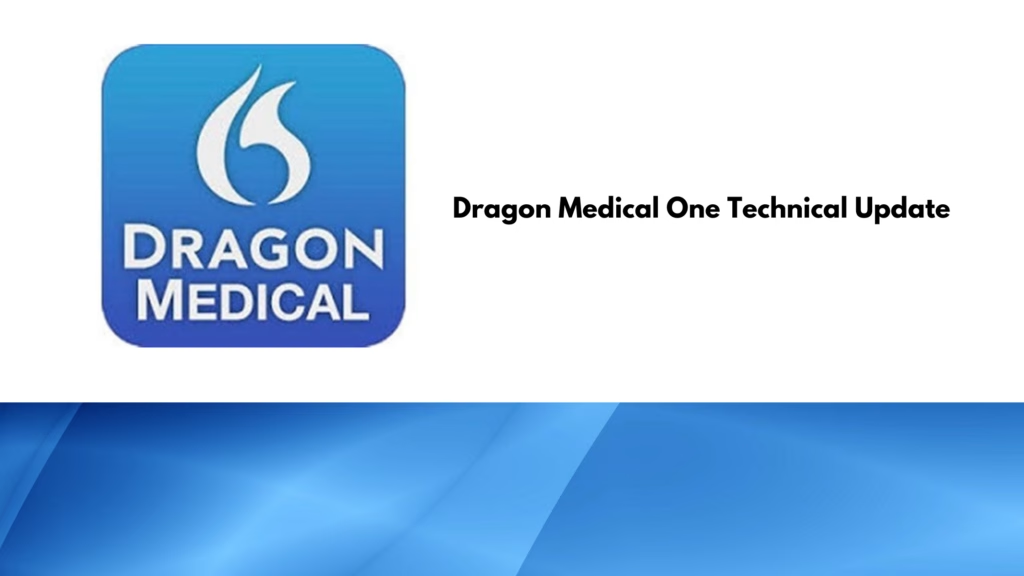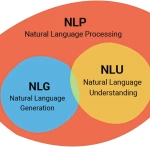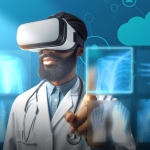The evolution of physician workflow technology has undergone a dramatic transformation over the past decade, largely driven by innovations from nuance communications. From the revolutionary Dragon Medical One speech recognition platform to the groundbreaking Dragon Ambient eXperience (DAX), Nuance has consistently delivered solutions that address healthcare’s most pressing challenges: physician burnout, documentation burden, and the need for more meaningful patient interactions.
This technological journey represents more than simple product evolution—it embodies a fundamental shift in how healthcare technology supports clinical practice. Where traditional electronic health record (EHR) systems often created barriers between physicians and patients, Nuance innovations have worked to remove those barriers while maintaining the accuracy and completeness required for quality patient care and regulatory compliance.
The impact extends far beyond individual physician productivity to encompass healthcare system efficiency, patient satisfaction, and clinical outcomes. As healthcare organizations worldwide struggle with physician shortages and increasing administrative demands, the evolution from Dragon Medical One to DAX provides a roadmap for technology-enabled solutions that truly support clinical excellence.
Dragon Medical One: Revolutionizing Clinical Documentation
Dragon Medical One emerged as a game-changing solution for clinical documentation, addressing the fundamental challenge of accurate, efficient medical record creation. This cloud-based speech recognition platform represented a significant advancement over traditional dictation systems, offering unprecedented accuracy and seamless integration with major EHR platforms.
Advanced Speech Recognition for Healthcare
The platform’s sophisticated speech recognition engine was specifically trained on medical terminology, enabling physicians to dictate complex clinical notes with remarkable accuracy. Key capabilities included:
- Medical vocabulary recognition spanning all specialties and subspecialties
- Real-time transcription with immediate text display and editing
- Custom vocabulary adaptation for institutional and physician-specific terminology
- Multi-accent and dialect support for diverse physician populations
- Integration with paperport for windows 11 systems for comprehensive document management
The system’s ability to understand medical context and terminology significantly reduced the time physicians spent on documentation while improving accuracy and completeness of clinical records.
EHR Integration and Workflow Optimization
Dragon Medical One’s seamless integration with major EHR systems eliminated the friction typically associated with clinical documentation technology. Physicians could dictate directly into any text field within their EHR, maintaining natural workflow patterns while benefiting from advanced speech recognition.
Integration benefits included:
- Native compatibility with Epic, Cerner, Allscripts, and other major EHR platforms
- Voice commands for navigation and data entry within electronic health records
- Automated formatting and structure for various clinical note types
- Real-time spell checking and medical terminology validation
- Secure, HIPAA-compliant cloud-based processing
This integration approach meant that healthcare organizations could implement advanced speech recognition without disrupting established clinical workflows or requiring extensive physician retraining.
Impact on Physician Productivity and Satisfaction
The implementation of Dragon Medical One in healthcare organizations consistently demonstrated significant improvements in physician productivity and job satisfaction. Clinical studies and user reports showed measurable benefits across multiple dimensions:
- Documentation time reduction of 35-50% compared to traditional typing methods
- Improved clinical note quality and completeness
- Reduced physician overtime and after-hours documentation work
- Enhanced work-life balance through more efficient clinical workflows
- Decreased physician burnout related to administrative tasks
These improvements translated into tangible benefits for healthcare organizations, including reduced physician turnover, improved patient throughput, and enhanced quality metrics.
The Evolution to Ambient Clinical Intelligence
While Dragon Medical One significantly improved clinical documentation efficiency, it still required physicians to actively engage with technology during patient encounters. The next evolutionary step involved developing ambient clinical intelligence that could capture and document patient encounters without requiring explicit physician interaction with documentation systems.
Understanding Ambient Listening Technology
Ambient clinical intelligence represents a paradigm shift from active documentation to passive capture of clinical encounters. This technology uses advanced microphones and acoustic processing to capture conversations between physicians and patients, then applies sophisticated AI algorithms to extract clinically relevant information.
Key technological components include:
- Multi-directional microphone arrays for comprehensive audio capture
- Advanced noise cancellation and speech separation algorithms
- Real-time natural language processing for clinical content identification
- Nuance cloud processing for scalable, secure analysis
- Integration with existing clinical workflow and EHR systems
The technology operates transparently during patient encounters, allowing physicians to focus entirely on patient care while documentation occurs automatically in the background.
Natural Language Processing and Clinical Context
The success of ambient clinical intelligence depends heavily on sophisticated natural language processing capabilities that can understand clinical conversations in context. This involves several complex technological challenges:
- Distinguishing between clinical information and casual conversation
- Understanding medical terminology and abbreviations in spoken context
- Identifying speaker roles and attributing information correctly
- Extracting structured data from unstructured conversational content
- Maintaining accuracy across different medical specialties and encounter types
These capabilities require extensive training on clinical conversations and continuous refinement based on real-world usage patterns and physician feedback.
Dragon Ambient eXperience (DAX): The Next Generation
Dragon Ambient eXperience represents the culmination of decades of innovation in clinical documentation technology. This platform combines ambient listening capabilities with advanced AI processing to create comprehensive clinical documentation without requiring active physician engagement during patient encounters.
Comprehensive Clinical Documentation Automation
DAX automatically generates complete clinical notes from patient encounters, including all the structured elements required for clinical care and billing compliance. The system produces:
- Chief complaint and history of present illness documentation
- Review of systems based on conversation content
- Physical examination findings as dictated by the physician
- Assessment and plan with appropriate clinical reasoning
- Follow-up instructions and patient education documentation
According to American Medical Association, physicians using DAX report spending 70% less time on documentation while maintaining or improving note quality and completeness.
AI-Powered Clinical Reasoning and Structure
The platform’s AI capabilities extend beyond simple transcription to include clinical reasoning and appropriate medical documentation structure. This involves:
- Automatic organization of information into standard clinical note formats
- Clinical decision support through evidence-based recommendations
- Quality assurance checking for completeness and accuracy
- Integration with clinical guidelines and best practice protocols
- Automated coding suggestions for billing and compliance purposes
These features ensure that automatically generated documentation meets the highest standards for clinical care and regulatory compliance.
Multi-Specialty Adaptation and Customization
DAX adapts to the unique requirements of different medical specialties, understanding the specific terminology, workflow patterns, and documentation needs of various clinical disciplines:
- Primary Care: Comprehensive wellness visits and chronic disease management
- Cardiology: Complex diagnostic procedures and treatment planning
- Orthopedics: Surgical planning and post-operative care documentation
- Emergency Medicine: Rapid assessment and triage documentation
- Psychiatry: Mental health assessments and treatment planning
This specialization ensures that the technology provides relevant, accurate support regardless of clinical context or medical specialty.
Impact on Healthcare Organizations and Systems
The evolution from Dragon Medical One to DAX has created measurable improvements across healthcare organizations, extending benefits beyond individual physician productivity to encompass system-wide efficiency and quality improvements.
Operational Efficiency and Cost Reduction
Healthcare organizations implementing advanced clinical documentation solutions report significant operational improvements:
- Reduced transcription costs through automated documentation generation
- Improved billing accuracy and revenue capture through better documentation
- Decreased physician overtime and after-hours work requirements
- Enhanced patient throughput through more efficient encounter documentation
- Reduced errors and rework associated with incomplete or inaccurate documentation
These efficiency gains translate into substantial cost savings and improved financial performance for healthcare organizations.
Quality Metrics and Patient Care Outcomes
Advanced clinical documentation technology contributes to improved quality metrics and patient care outcomes through several mechanisms:
- More comprehensive and accurate clinical documentation supporting better care coordination
- Improved medication reconciliation and allergy documentation
- Enhanced communication between care team members through detailed encounter notes
- Better patient education documentation and follow-up tracking
- Improved compliance with quality measures and regulatory requirements
The technology enables physicians to focus more attention on patient care while ensuring that documentation requirements are met comprehensively and accurately.
Physician Recruitment and Retention Benefits
Healthcare organizations face significant challenges in physician recruitment and retention, often related to workload and work-life balance concerns. Advanced clinical documentation technology addresses these challenges by:
- Reducing administrative burden that contributes to physician burnout
- Improving work-life balance through more efficient clinical workflows
- Enhancing job satisfaction by enabling more meaningful patient interactions
- Providing competitive advantages in physician recruitment efforts
- Supporting physician wellness initiatives and burnout prevention programs
Patient Experience and Care Quality Enhancement
The evolution of clinical documentation technology has profound implications for patient experience and care quality, creating opportunities for more meaningful physician-patient interactions and improved clinical outcomes.
Enhanced Physician-Patient Communication
By removing the barrier of active documentation during patient encounters, ambient clinical intelligence enables more natural, engaging physician-patient conversations:
- Increased eye contact and personal interaction during clinical encounters
- More thorough patient history gathering through natural conversation flow
- Enhanced patient engagement and participation in care decisions
- Improved patient satisfaction scores related to physician communication
- Better patient education and counseling during clinical visits
These improvements in communication quality contribute to better patient outcomes and higher satisfaction with healthcare experiences.
Comprehensive Care Documentation and Continuity
Advanced clinical documentation ensures that all aspects of patient care are accurately captured and available to future healthcare providers:
- Complete medical history documentation for improved care continuity
- Detailed treatment plans and patient education materials
- Comprehensive medication management and allergy documentation
- Thorough documentation of patient preferences and care goals
- Enhanced communication between primary and specialty care providers
This comprehensive documentation supports better coordinated care and improved patient safety across healthcare settings.
Implementation Strategies and Best Practices
Successful implementation of advanced clinical documentation technology requires careful planning, stakeholder engagement, and attention to change management principles.
Organizational Readiness and Assessment
Healthcare organizations must evaluate their readiness for advanced clinical documentation technology implementation:
- Current EHR capabilities and integration requirements
- Network infrastructure and security considerations
- Physician workflow patterns and specialty requirements
- Training needs and change management resources
- Budget considerations and return on investment projections
Thorough readiness assessment ensures that implementation efforts are successful and sustainable over time.
Physician Training and Adoption Strategies
Successful physician adoption requires comprehensive training programs and ongoing support:
- Hands-on training sessions with specialty-specific scenarios
- Peer champion programs for physician-to-physician support
- Gradual rollout strategies that minimize workflow disruption
- Regular feedback collection and system optimization
- Ongoing education about new features and capabilities
Effective training programs ensure that physicians can fully leverage advanced documentation capabilities while maintaining confidence in system accuracy and reliability.
Quality Assurance and Continuous Improvement
Healthcare organizations must establish robust quality assurance processes for clinical documentation technology:
- Regular audits of documentation accuracy and completeness
- Physician feedback collection and analysis
- System performance monitoring and optimization
- Compliance verification and regulatory requirement validation
- Continuous improvement processes based on user experience and outcomes data
These processes ensure that clinical documentation technology continues meeting organizational needs and regulatory requirements over time.
Regulatory Compliance and Legal Considerations
Advanced clinical documentation technology must address comprehensive regulatory requirements while maintaining the flexibility needed for diverse clinical applications.
HIPAA Compliance and Data Security
Healthcare documentation systems must implement robust security measures to protect patient information:
- End-to-end encryption for all voice and text data transmission
- Secure cloud storage with access controls and audit logging
- Business Associate Agreement compliance for third-party processing
- Data retention policies aligned with legal and regulatory requirements
- Regular security assessments and penetration testing
According to Department of Health and Human Services, healthcare organizations must implement comprehensive safeguards for electronic protected health information, including advanced authentication and access controls.
Medical Legal Documentation Standards
Clinical documentation generated by AI systems must meet the same legal and professional standards as traditional physician-generated documentation:
- Physician review and attestation requirements for AI-generated content
- Clear attribution of clinical observations and decisions
- Audit trails for documentation creation and modification
- Compliance with medical record retention requirements
- Integration with legal discovery and subpoena response processes
These requirements ensure that advanced clinical documentation technology supports rather than complicates legal and regulatory compliance efforts.
Future Developments and Innovation Roadmap
The field of clinical documentation continues evolving rapidly, with new capabilities and applications emerging that will further transform physician workflow and patient care delivery.
Emerging Technology Integration
Future developments will expand clinical documentation capabilities through integration with emerging technologies:
- Computer Vision: Integration of visual information from patient encounters
- IoT Medical Devices: Automatic incorporation of device data into clinical notes
- Predictive Analytics: Proactive identification of clinical risks and opportunities
- Augmented Reality: Visual overlay of clinical information during patient encounters
- Blockchain Technology: Secure, immutable clinical documentation and audit trails
Artificial Intelligence and Machine Learning Advancement
Continued advancement in AI and machine learning will enhance clinical documentation accuracy and capabilities:
- Improved natural language processing for complex clinical conversations
- Enhanced clinical decision support through evidence-based recommendations
- Automated quality assurance and error detection capabilities
- Personalized documentation templates based on physician preferences
- Predictive text and auto-completion for faster documentation creation
Economic Impact and Healthcare Cost Reduction
The widespread adoption of advanced clinical documentation technology has significant implications for healthcare economics and cost reduction across the healthcare system.
Healthcare System Cost Savings
Advanced clinical documentation technology contributes to healthcare cost reduction through multiple mechanisms:
- Reduced administrative overhead through automation and efficiency improvements
- Decreased physician burnout and turnover costs
- Improved billing accuracy and revenue cycle management
- Enhanced quality metrics and reduced penalties for poor performance
- Better resource utilization through improved operational efficiency
These cost savings benefit healthcare organizations, patients, and the broader healthcare system through more efficient resource allocation and reduced administrative waste.
Return on Investment Analysis
Healthcare organizations consistently report positive return on investment from advanced clinical documentation technology implementations:
- Typical payback periods of 6-18 months depending on organization size
- Ongoing cost savings through reduced transcription and administrative costs
- Improved physician productivity and patient throughput
- Enhanced quality metrics and financial performance
- Reduced risk of regulatory penalties and compliance issues
These financial benefits make advanced clinical documentation technology an attractive investment for healthcare organizations seeking to improve both clinical and financial performance.
Conclusion
The evolution from Dragon Medical One to Dragon Ambient eXperience represents a transformative journey in healthcare technology that has fundamentally changed how physicians interact with clinical documentation systems. This progression from active speech recognition to passive ambient intelligence demonstrates the potential for technology to truly support clinical excellence while reducing administrative burden.
The impact of these innovations extends far beyond individual physician productivity to encompass healthcare system efficiency, patient care quality, and the overall sustainability of healthcare delivery. By enabling physicians to focus on patient care rather than documentation requirements, nuance communications has created technology solutions that address some of healthcare’s most pressing challenges.
As healthcare continues evolving toward value-based care and enhanced patient outcomes, the role of advanced clinical documentation technology will become increasingly critical. The foundation established by Dragon Medical One and the revolutionary capabilities of DAX provide a roadmap for continued innovation that promises to further transform physician workflow and patient care delivery.
Healthcare organizations that embrace these advanced technologies position themselves for success in an increasingly complex and demanding healthcare environment, where the quality of clinical documentation directly impacts patient care, regulatory compliance, and financial performance. The journey from Dragon Medical One to DAX is just the beginning of a transformation that will continue reshaping healthcare for years to come.


